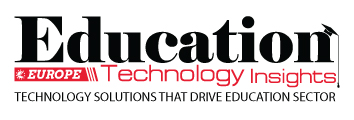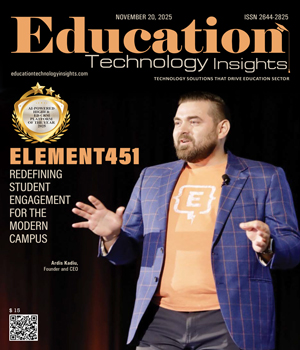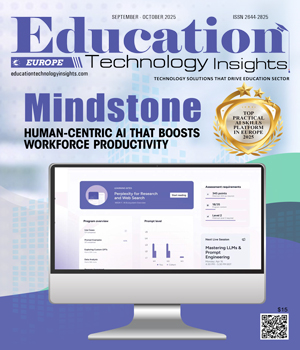THANK YOU FOR SUBSCRIBING
Be first to read the latest tech news, Industry Leader's Insights, and CIO interviews of medium and large enterprises exclusively from Education Technology Insights
Advancing Higher Education through Data-Driven Innovation and Generative AI
Jean Mandernach, Executive Director, Center for Innovation in Research and Teaching, Grand Canyon University
 Jean Mandernach, Executive Director, Center for Innovation in Research and Teaching, Grand Canyon University
Jean Mandernach, Executive Director, Center for Innovation in Research and Teaching, Grand Canyon UniversityAs Executive Director of the Center for Innovation in Research on Teaching at Grand Canyon University, I focus on enhancing higher education through data-driven approaches. Our mission is to support faculty in applying a scholarly lens to teaching, with an emphasis on integrating instructional technology based on learning outcomes. With the rise of generative AI, this focus has become even more crucial. We help faculty apply the same rigor to teaching as they do to research, ensuring the effective use of technology while prioritizing learning outcomes. Adaptive, evidence-based teaching practices are more essential now than ever.
The Role of Data in Successful Technology Integration in Education
The successful integration of technology in education comes down to one key factor: data. While this may sound simple, it's a complex challenge because every educational setting is unique. Each institution has distinct goals, needs, and resources, making a one-size-fits-all approach impossible.
Instead, institutions should use a data-driven approach with guiding questions to define success in their specific context. Consider the following:
● What are the specific learning goals we aim to achieve with this technology?
● How does this technology impact student engagement, inclusivity, and accessibility?
● Does our institutional infrastructure support the integration of this technology?
● What professional development will our faculty need to effectively use this technology?
● How will we evaluate the effectiveness and long-term impact of this technology?
These questions ensure that technology is integrated thoughtfully, based on the unique needs of each institution. Successful integration doesn't end with implementation; it involves ongoing evaluation and adaptation based on data. Integrating technology effectively means asking the right questions, gathering meaningful data, and being willing to make adjustments for continuous improvement—just like the educational process itself.
Overcoming Mindset Barriers to Generative AI Adoption in Higher Education
The widespread adoption of educational technology has overcome many general barriers, leaving those who resist basic tech adoption at risk of becoming outdated. However, the primary challenge for adopting generative AI in higher education is mindset. Generative AI has the potential to transform education, much like the Internet did, by fundamentally changing teaching and learning.
Faculty and administrators currently fall into five categories in their approach to AI:
1. Enthusiasts: Actively seek to integrate AI into teaching and research, seeing it as a tool for enhancing learning and innovating pedagogical practices.
2. Pragmatists: Value AI but adopt it selectively where it clearly benefits their work.
3. Skeptics: Question AI’s effectiveness and raise ethical concerns.
4. Resisters: View AI as a threat to educational integrity and oppose its use.
5. Uninformed or Indifferent: Either unaware of AI’s applications or indifferent, they continue using traditional practices without engaging with AI tools.
Enthusiasts and Pragmatists have started shifting their mindset, exploring how AI can enhance their effectiveness and improve learning outcomes. In contrast, Skeptics, Resisters, and the Uninformed are reinforcing traditional views that hinder the exploration of new possibilities.
The real challenge lies in fostering a broader paradigm shift, moving beyond seeing AI as a tool for existing practices to imagining new instructional approaches that fully leverage AI’s capabilities. This requires professional development, open dialogue, and showcasing successful AI integrations.
Ultimately, overcoming barriers to AI adoption involves promoting a culture of innovation and adaptability, where educators are encouraged to reimagine their roles and redefine the nature of learning in an AI-enhanced world.
Data-Driven Approach to Integrating Emerging Technologies in Education
At GCU, our approach to integrating emerging technologies is multifaceted and data-driven. Instead of a one-size-fits-all strategy, we use a variety of methods to stay current with technology trends while ensuring a positive impact on student learning, safety, security, and accessibility.
Our strategy involves several levels:
1. Faculty-driven Initiatives: Faculty lead integration efforts based on their unique needs and interests, tailoring technology use to their disciplines and student populations.
2. Curriculum Collaboration: Our curriculum services team works with faculty to strategically incorporate technology into targeted courses.
3. Training and Support: The Faculty Training and Development team provides ongoing support for using educational technology across all formats—whether in-person, hybrid, or online.
4. Faculty Committees: The Teaching Technology Committee and AI Committee explore emerging technologies and provide feedback on their educational impact.
These initiatives ensure we thoughtfully explore and evaluate new technologies before implementing them widely. Close collaboration with IT and Tech Support teams further ensures that adopted technologies meet safety and security standards, while our Center for Innovation in Research on Teaching conducts research on their impact on learning, satisfaction, and retention.
This comprehensive, structured approach allows us to innovate responsibly, leveraging faculty expertise while prioritizing student learning outcomes.
Comprehensive Approach to Integrating Emerging Technologies, Focusing on Generative AI
At GCU, our integration of emerging technologies, especially generative AI, is not confined to a single project but is part of a comprehensive, multi-domain initiative. This approach reflects our commitment to intentionally and strategically exploring AI’s potential in higher education.
We understand that AI's value goes beyond administrative efficiencies and classroom innovations. It has the potential to transform resource management, enhance student experiences, and personalize education. To ensure its benefits are widely accessible, we follow a holistic strategy that aligns with GCU’s mission to prepare students as global citizens, critical thinkers, and responsible leaders.
Our efforts focus on five key areas:
1. Administrative Efficiency: Using AI to streamline processes and improve service delivery.
2. Academic Enhancements: Integrating AI into teaching practices, offering resources, and organizing events to keep faculty and students informed.
3. Student Services: Providing guidance and resources for students to use AI tools responsibly.
4. Research and Innovation: Exploring AI's role in research and collaborating with organizations to share best practices.
5. Ethics and Policy: Grounding our AI integration in ethical considerations and developing institutional policies.
These initiatives are already leading to increased faculty and student engagement, innovative teaching and research methods, and recognition of GCU as a leader in responsible AI integration. As we move forward, we remain committed to maximizing the educational benefits of AI, fostering an inclusive community, and positioning GCU at the forefront of AI-driven advancements in higher education.
Advice for New Education Entrepreneurs in Educational Technology
Listen to faculty; they have firsthand insights into student challenges that market research can’t fully capture. Their understanding of struggles and inefficiencies is crucial for developing effective solutions. By fostering open dialogue and feedback loops, entrepreneurs can merge faculty expertise with technology to create tools that enhance teaching and learning.
Read Also
Goldilocks Regulation
Beyond the Quiz: Redefining Competence in eLearning
Beyond Theory and Into Monday Morning: Enhancing Graduate Programs for Teachers
Safeguarding Students in the Age of Deepfakes: An Educational Imperative
Delivering Excellence in Education through Transformative School Leadership
Curriculum Innovation for Student Success and Institutional Growth

I agree We use cookies on this website to enhance your user experience. By clicking any link on this page you are giving your consent for us to set cookies. More info

However, if you would like to share the information in this article, you may use the link below:
www.educationtechnologyinsightseurope.com/cxoinsights/jean-mandernach-nid-3497.html





















